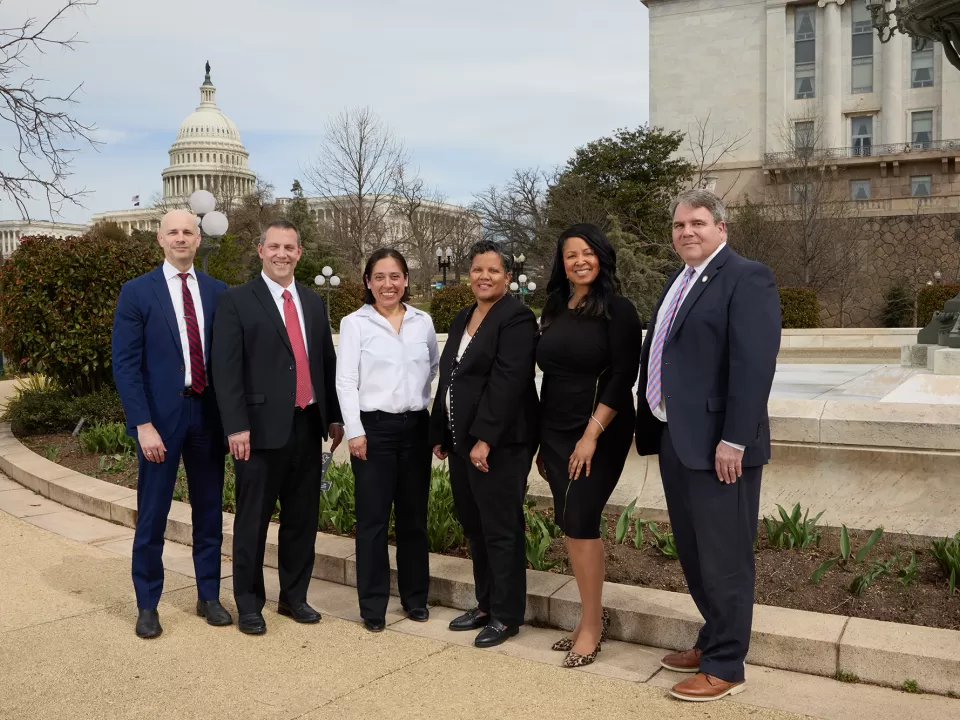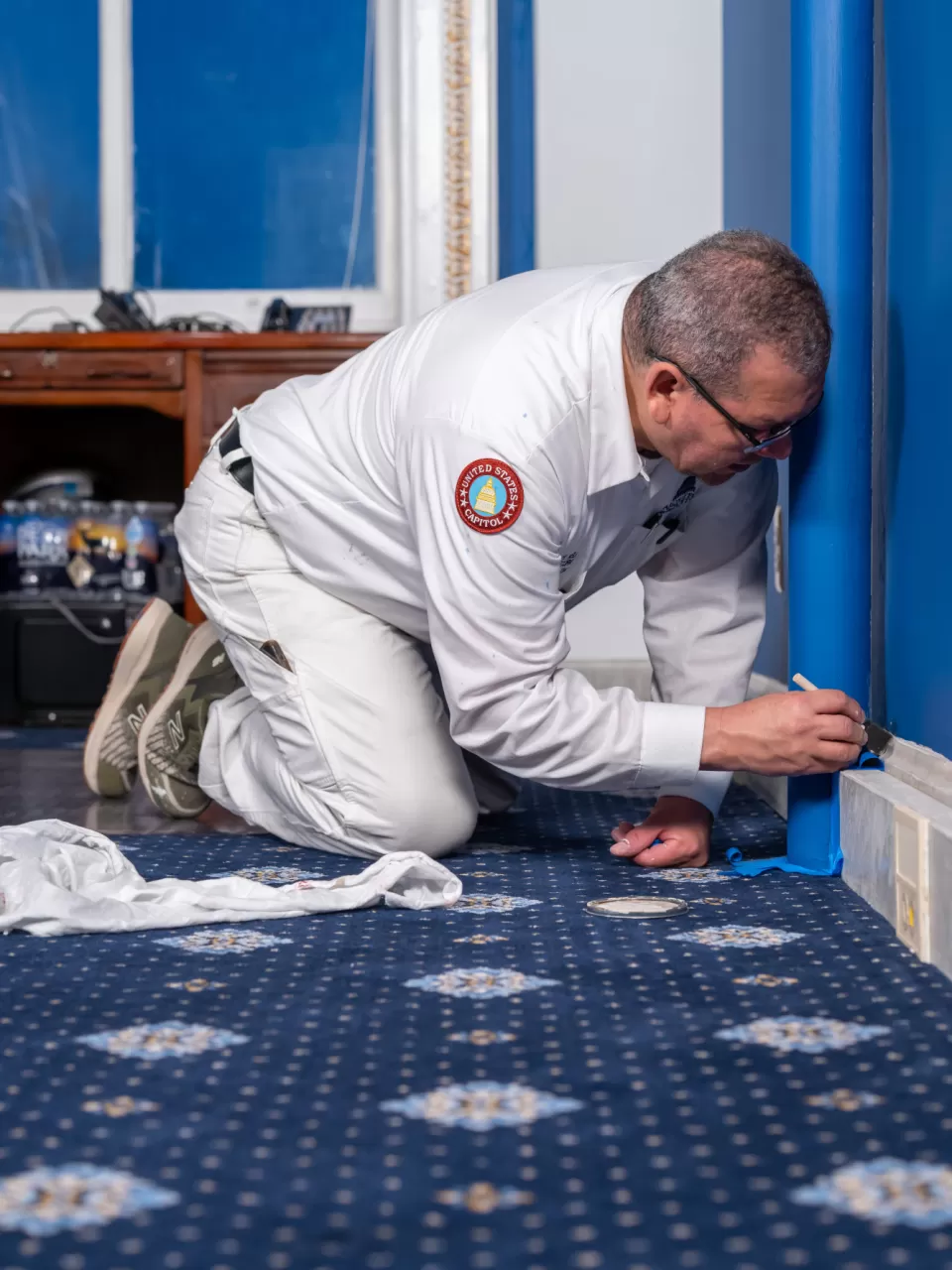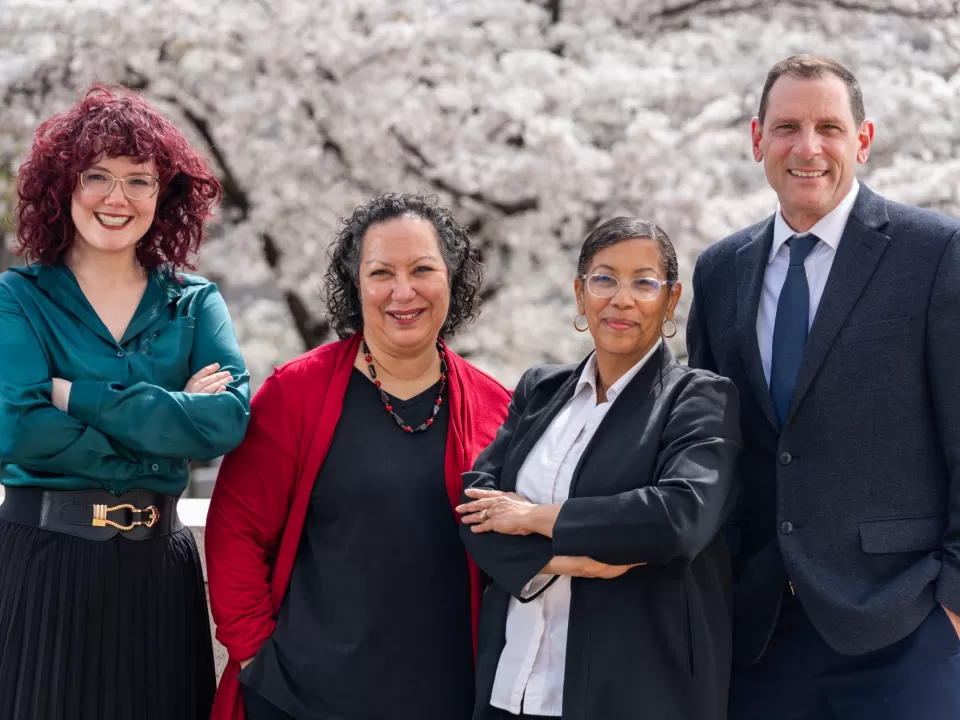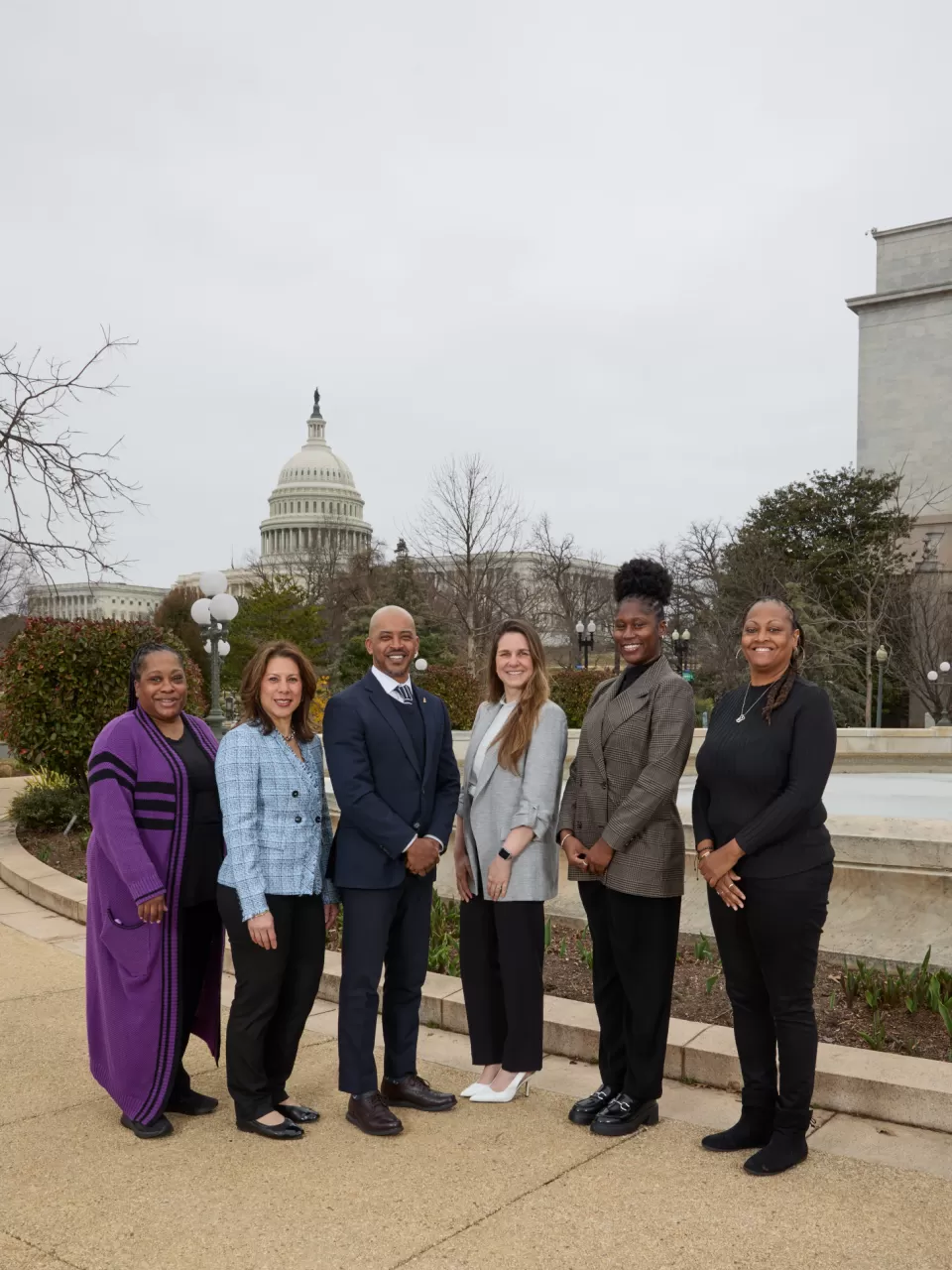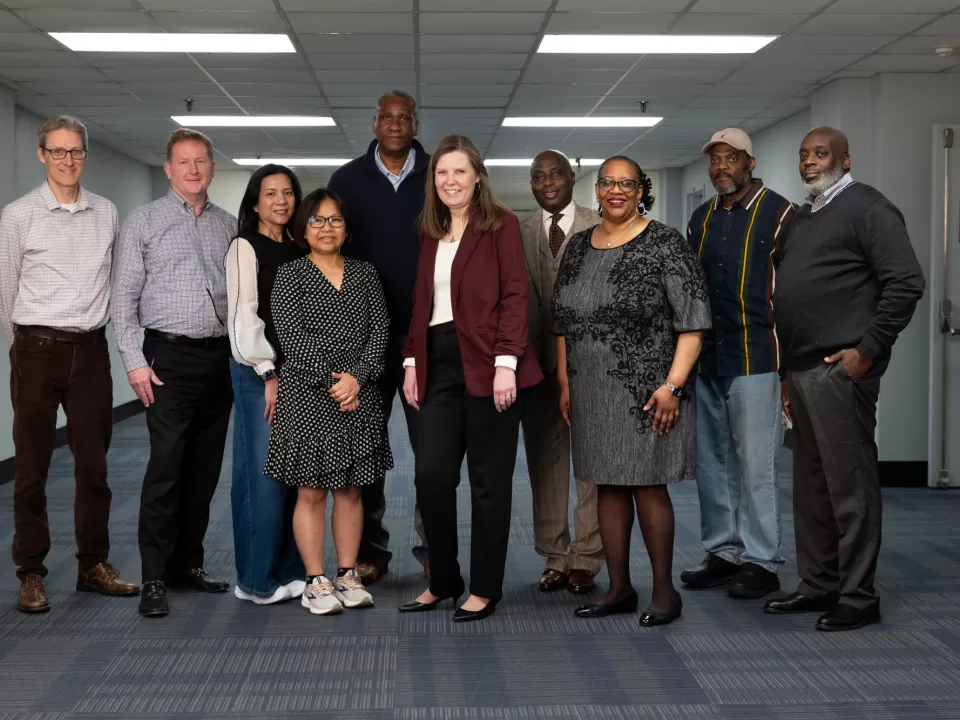The Architect of the Capitol (AOC) plays a vital role in the congressional moves process every two years, requiring coordination across the Capitol campus to ensure a successful start for each new Congress.
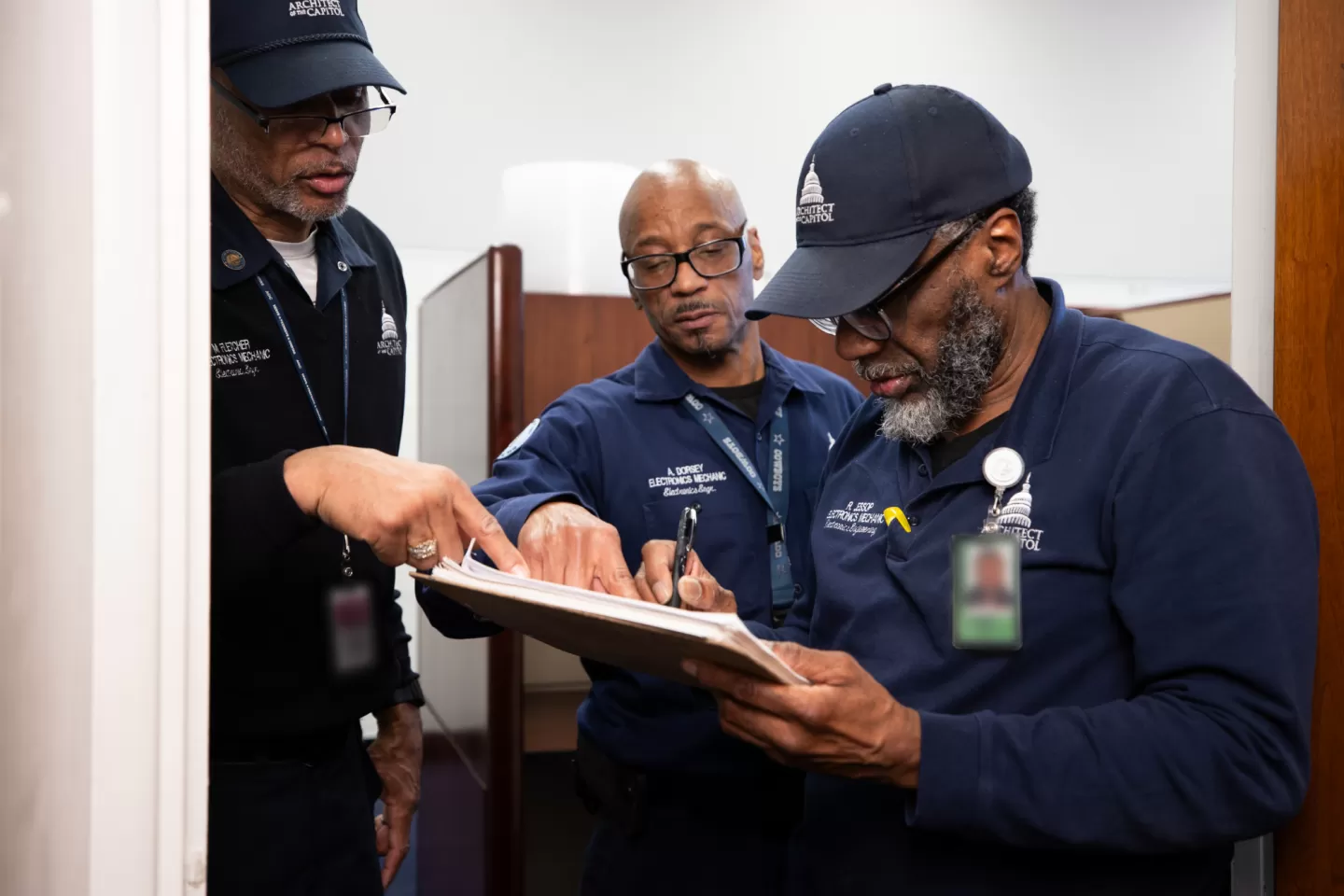
AOC employees work around the clock and touch nearly every space on the Capitol campus. They support events both large and small, but much of that work is done behind the scenes, including efforts related to congressional moves.
From the obvious logistics of moving boxes and furniture to the more obscure roles of facilitating the turnover of new keys to excited staff and creating detailed virtual tours of Member offices on campus, the AOC's jurisdictions work with many supporting offices to ensure a seamless transition from one Congress to another.
The work is extensive — requiring agency resources for nearly a year in addition to overseeing other special events, like weather emergencies and congressional ceremonies, while also managing daily tasks and unplanned emergencies. The challenges are numerous — short deadlines, competing priorities and a long list of logistical details requiring the most careful coordination to make sure everyone everyone stays on schedule. The House moves begin and conclude in December, there are IT applications to develop and update, new office layouts to design, and thousands of photos to take to capture all the work along the way.
Caring for the historic Capitol campus also comes with many challenges, but AOC employees continue to rise to meet them at every turn. The 2024-2025 congressional office moves cycle was no exception.
Read more about their work below as we celebrate another successful transition.
- Office of the Chief of Operations (OCO)
The Office of the Chief of Operations served as the central coordinator between the jurisdictions and all supporting offices during the recent congressional office moves. The team's primary role was to organize the supporting offices to ensure their efforts were synchronized throughout the move cycle.
"I am incredibly proud of the unwavering commitment and collaborative spirit our team demonstrated during this move cycle. Each member contributed their expertise, ensuring a seamless transition for our new congressional occupants. This experience truly highlights the power of unity in achieving a common goal."
— Joe DiPietro, Chief of OperationsThe congressional moves are a major agencywide effort and present several challenges, including tight timelines, coordination among multiple offices, both internally and externally, and the need to comply with various logistical requirements. One key challenge is making sure that all aspects of the moves — such as staffing, technology requirements and office designs — are seamlessly aligned and executed on time. To overcome these challenges, the OCO emphasized the need for proactive communication and collaboration between the offices, including regular updates to senior leadership on the progress and potential impacts of the moves. This allowed for a supportive environment where all offices could contribute to the success of the moves.
Part of that communication effort included holding joint meetings at key intervals; monitoring progress on hiring temporary workers with the Human Capital Management Division and the development of the suite websites with the Information Technology Division; and working with the Office of the Chief Engineer regarding architect support for suite planning sessions. The joint meetings also helped to ensure coordination with the Capitol Power Plant's Electronics Branch, which provided video and television support, and the Photography and Technical Imaging Branch, which was tasked with delivering the suite video tours.
By bringing AOC offices and colleagues together for regular meetings, the OCO ensured that staff remained informed and that potential issues were addressed promptly, ultimately contributing to a smooth transition for the new Congress.
- Capitol Building | OCO
The Capitol Buildings jurisdiction's Planning, Evaluations and Operations team serves as the lead for coordinating moves in the U.S. Capitol. They work with congressional leadership and Capitol Hill partners to help Member offices navigate a variety of needs during the transition.
The Capitol Building assists offices by moving items such as personal art and boxes, creating personalized door signs, and working with staff to develop drawings for each new space. It also facilitates certain aspects of the transition including painting requests and key services. Like other jurisdictions, the Capitol Building team works through office moves while overseeing its normal day-to-day work, but it also has the unique responsibility for planning and building the infrastructure to support the presidential inauguration every four years.
- Capitol Power Plant | OCO
On a normal day, one of the responsibilities of the Capitol Power Plant's Electronics Branch is to provide Capitol Hill offices with cable television. During the congressional moves cycle, the branch also supports nearly 1,000 television resets, working to prepare for disconnections and removals, reinstall cable infrastructure to accommodate new office configurations, reconnect newly installed televisions and verify the quality of service for all.
"I feel I can speak for all when I say it is one to use as an 'around the fireplace stories' to tell others. Each one of the members of my team is proud to serve Congress and all the Capitol Hill associates, knowing that what we do is visible by the nation. Every one of us has a certain mission that we are called to fulfill; ours has been service to our country and family, and I am proud to say that here, we have such fulfillment."
— Robert Gatewood, Electronics Branch General SupervisorThis requires a large effort and is supported solely by the branch's in-house staff of 13, including electronics mechanics, work leaders, supervisors and the general supervisor. The team handles the tasks associated with the moves in conjunction with their daily tasks and works together to balance schedules to avoid burnout and also get the job done within the short timeframe required for the moves.
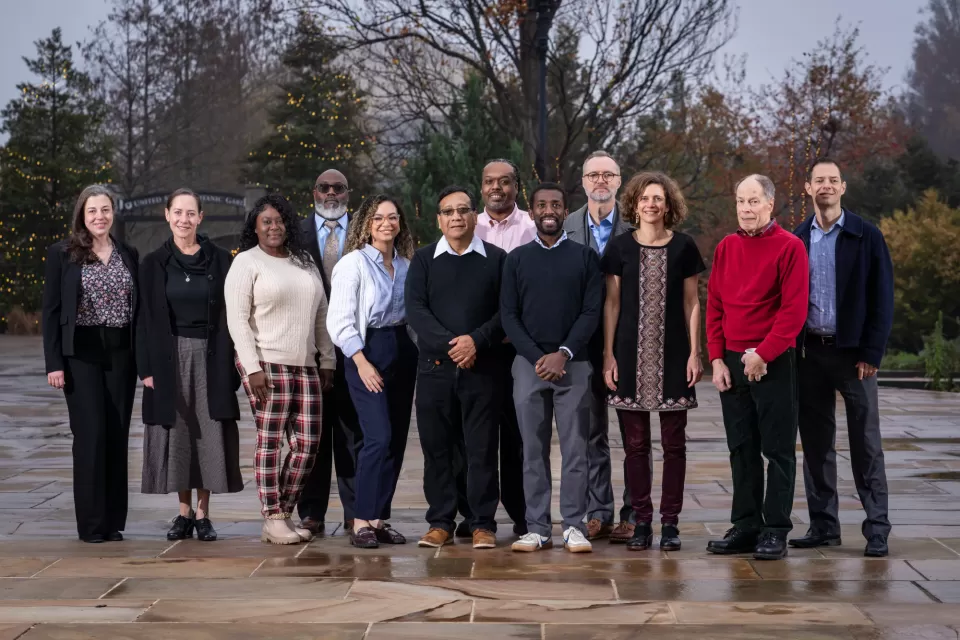
- Office of the Chief Engineer (OCE)
The Office of the Chief Engineer provides support for the congressional moves on many levels. For the 2024-2025 moves, architects in OCE's Design Services, with additional staff from the Senate Office Buildings (SOB) and U.S. Botanic Garden (USBG), supported the House moves by meeting with Members and their staff to understand how Members intended to use their offices. OCE also has an architect who is dedicated to the Senate moves and provides space planning support for the offices. Once the architects have met with Members, they use that information to develop detailed floor plans to meet the office's needs. Like much of the AOC's work related to moves, the architects' work began months prior to the actual moves and involved attending briefings to review standards for the required space planning work and meeting with OCE's Technical Service Branch to review office drawings and further define them prior to distribution.
OCE's Technical Service Branch has a team of computer-aided design (CAD) experts who started working on the moves in the early spring of 2024. They coordinated closely with the AOC's House and Senate jurisdictions to update the CAD drawings that were then used by the architects during design meetings.
Two challenges that must be overcome in any congressional moves cycle include balancing workloads and keeping pace with the fast-moving process. The House moves last approximately three weeks for the architects and require a significant investment of time. The architects work diligently and swiftly, preparing for Member meetings by downloading existing and future office space plans and reviewing them so they’re familiar with the office layouts, including heating elements they have to avoid in the layout or accessibility issues that must be considered prior to the meetings. When meeting with Members they learn about their office needs and then must quickly translate those needs and operational requirements into a space plan in about an hour. Then they start all over with a new office. Architects can have four move meetings in one day, requiring flexibility and the very best time management skills to ensure the entire process stays on track.
- Human Capital Management Division | CAO
Moves would not be possible without the AOC's dedicated staff, who are recruited, onboarded and supported by the Office of the Chief Administrative Officer (CAO) Human Capital Management Division (HCMD).
During the congressional moves cycle, HCMD works collaboratively with the hiring managers and administrative support staff from the House Office Buildings and Senate Office Buildings jurisdictions to ensure they have the staff necessary to facilitate the high number of moves. HCMD provides support to create and update position descriptions, develop recruitment strategies to attract talent for open positions, and welcome new employees to the AOC in onboarding sessions led by the division; they are also responsible for processing new employees' HR-related paperwork to ensure they receive their pay and benefits — all critical steps in a successful hiring process.
"Year after year, HCMD is excited to be a part of the congressional office moves. Our primary goal is to provide human capital strategic and tactical assistance to [House Office Buildings] HOB and [Senate Office Buildings] SOB leadership as well as AOC employees on the front lines as they work to carry out the AOC's mission to support Congress. As Chief Human Capital Officer, I continue to be tremendously proud of the HCMD team and their commitment to this important work."
— Teresa Bailey, Chief Human Capital OfficerA key hiring challenge is the volume of employees that are onboarded over a short period of time. HCMD manages the increased hiring surge through enhanced collaboration and communication with their own colleagues as well as the many stakeholders involved across the jurisdictions. For this moves cycle, the Talent Acquisition Branch modified HCMD's approach by assigning a three-person recruitment team to ensure that both the House and Senate jurisdictions had sufficient applicant pools from which to hire new office moves staff. HCMD also maintained open and continuous job postings without a closing date to continue the talent acquisition process until positions could be filled. These are just a few examples of how HCMD staff worked strategically to quickly and efficiently recruit and identify qualified candidates to execute the agency's mission of service.
- Policy and Special Programs Division | CAO
The Policy and Special Programs (PSP) Division oversaw two important initiatives for the congressional moves in 2024. PSP developed a memorandum that provided guidance to AOC employees on the handling of United States flags during the course of official duties. Flags are among the most common items that are moved from office to office by AOC employees. The new memorandum ensures that all employees handle the United States flags with respect and in accordance with the United States Flag Code as the agency supports various events and projects, including congressional office moves.
"The Policy and Special Programs Division was proud to support the 119th Congressional Moves team. The Policy and Special Programs team and the entire Office of the Chief Administrative Officer are always standing by to support the operational needs of the AOC."
— Brian Kohler, DirectorAdditionally, PSP oversees the agency's uniform program as part of its general duties. In preparation for the moves, the division ensured that all jurisdictions had enough uniforms in stock to immediately provide them to temporary employees hired to assist with moves. Thanks to the division's early preparations, AOC employees presented a standardized and professional appearance to tenants and the public as they carried out the important work in support of the moves.
- Information Technology Division | CAO
The Information Technology Division (ITD) plays a major role in facilitating the various technological needs required for the moves cycle. Three ITD branches — the Application Development and Support Branch, Infrastructure Management Branch, and Customer Engagement Branch — worked for several months prior to the November election and continued working through the spring in support of the transition of the new Congress.
- Application Development and Support Branch | CAO
The Application Development and Support Branch (ADSB) serves as the primary technical lead for the House and Senate congressional move applications. The branch develops and supports applications that the AOC uses to manage the suite and locker selections and move process, and Members and staff use to view available suites for selection. ADSB also works closely with the House and Senate jurisdictions to assist them with using the applications and to make data updates as needed. For the 2024–2025 move cycle, the branch completed a major development effort, expanding the functionality of the House Transition application for House administrators and providing Members with information about the selection and move process and schedule, selection status information, and suite browsing capability.
Supporting these systems is challenging from both a technical and business perspective, as they provide important and high-visibility services for Congress and must work seamlessly to ensure the moves stay on track. These specialized applications are unique to congressional moves and are only used every two years for a handful of weeks for the House moves and a few months for the Senate moves. ITD teams work together to ensure they can hit the ground running; there is no opportunity to phase in or pilot the systems before their full launch. ADSB works closely with the other branches in ITD to monitor all the systems to ensure that they’re functioning properly and address any issues as quickly as possible to avoid disrupting the suite selection proceedings.
- Infrastructure Management Branch | CAO
The Infrastructure Management Branch (IMB) worked closely with the House Office Buildings jurisdiction and ITD network team to conduct site surveys, evaluating the requirements for extending network access to designated rooms, and to prepare requisite equipment and ensure redundancy in the network infrastructure and equipment supporting the moves. The IMB also designed the technology setup for the room that was used to host the House lottery, deploying the network infrastructure and developing policies for the display, selection and browsing workstations used throughout the event. They also coordinated the effort to provide laptops, printers and large screens. The team worked with ADSB colleagues to troubleshoot performance and access issues throughout the event and monitored all technical performance to ensure Members could participate in the fast-paced lottery and suite selection process with no disruptions.
- Customer Engagement Branch | CAO
The Customer Engagement Branch supported the complete IT equipment setup configuration and provided full, on-site IT support throughout all the congressional move sessions. The branch worked side-by-side with transition staff to ensure a seamless and uninterrupted event and was quick to respond to any technology issues that arose. The team provided dedicated, in-person support to the House team for the entire lottery and suite selection period, which included a few long days. In addition, the team procured and prepared all required IT equipment, imaging laptops and desktops used during the lottery and suite selections. Throughout the process, members of the branch worked together to maintain a reliable inventory of backup equipment so they could quickly address any potential disruptions. They prioritized resolving issues by immediately escalating them to ITD colleagues and worked to communicate status updates to staff participating in the sessions, ensuring issues were resolved as soon as possible to support the fast-paced schedule.
Working laptops, applications and printers are easy to take for granted, but a successful moves cycle would not be possible without the critical support from ITD's many teams working behind the scenes to ensure each part of the process is seamlessly supported by the essential technology.
- Photography and Technical Imaging Branch | CAO
Before the first move begins, the Photography and Technical Imaging Branch (PTIB) provides photography and authoring for virtual tours of every Senate and House office suite, totaling more than 535 offices, for the respective suite selection websites. Each tour is built around half a dozen or more individual 360-degree panoramic photos of key spaces within each office suite, and a set of thousands of images that the branch keeps up to date in coordination with AOC jurisdictions as offices are renovated over the years. These virtual tours allow Members to get their first look at a number of office suites online that would otherwise take much longer to see in person.
"It's truly rewarding to be part of the moves and suite selection process, and a point of pride, considering their historic significance. I relish the opportunity to work together with so many of my talented colleagues across the agency and multiple jurisdictions on such significant work."
— Luke Walter, PhotographerImage PTIB staff create virtual tours of every Senate and House office suite and document the moves process across campus.
PTIB staff create virtual tours of every Senate and House office suite and document the moves process across campus.Capturing the images needed for the tours involved coordinating many logistical moving parts to get access to each space, which often occurred in the early morning or on weekends to limit disruptions to offices. Photographers walked the miles of corridors over several weeks to photograph each space. Once PTIB had captured the images, they had to carefully organize the files to ensure a feasible workflow so everyone could contribute to tour authoring for specific suites. They have also honed their skills in assembling a virtual tour that gives the viewer a clear sense of the office, coming as close as they can to an actual visit. As the tours were finalized, PTIB handed the files over to ITD for upload to the suite selection website and coordinated the reviews and any necessary edits with the jurisdictions.
PTIB is also responsible for photographing and documenting the changes that are made to the suites during the moves process. The documentation of this work naturally includes physical changes to the suites, like new carpeting and paint, but it also includes capturing the efforts of the AOC's dedicated employees from across all trades who work around the clock to ensure each suite is perfect before the keys are turned over to its new tenants.
